
Yardlong Bean: Sowing, Growing and Harvesting
Contents
The yardlong bean in a few words
- Also known as yardlong bean, the asparagus bean (Vigna unguiculata subsp. sesquipedalis) belongs to the Fabaceae family.
- This herbaceous plant, cultivated as a vegetable, produces long, slender pods that can reach up to one metre in length, with a flavour reminiscent of beans and asparagus.
- Native to tropical and subtropical regions, the asparagus bean requires warmth. It is grown in southern France or under cloches.
- This is a climbing bean with voluble stems that can extend 3 to 4 metres.
- Its cultivation is very simple and requires no particular care.
Our expert's word
At first glance, Vigna unguiculata subsp. sesquipedalis looks just like a bean. The name for starters, as this vegetable is known as the yardlong bean or asparagus bean. Then, the shape of the pods unmistakably evokes beans, but beans of a surprising size, as they often reach a metre in length. The foliage and flowering also resemble those of beans. Finally, Vigna unguiculata subsp. sesquipedalis, like beans, does indeed belong to the Fabaceae family.
However, one botanical characteristic sets them apart: the beans we all know and grow in our vegetable gardens, whether they are string beans, pole beans, snap beans or shell beans, belong to the genus Phaseolus, whereas the astonishing yardlong bean falls under the genus Vigna. In the garden as elsewhere, appearances can be deceiving: the yardlong bean is not technically a bean, at least not botanically speaking!
As for its flavour, it is similar to that of a bean, with a slight asparagus taste.
In the vegetable garden, the yardlong bean, widely cultivated in tropical and subtropical regions of Asia, Africa and South America, requires sun and warmth. It can therefore be grown in the south of France without difficulty. Elsewhere, cultivation under cover or in a tunnel is recommended to obtain beautiful pods.
Description and botany
Botanical data
- Latin name Vigna unguiculata subsp. sesquipedalis
- Family Fabaceae
- Common name Yardlong bean, asparagus bean, Chinese long bean, snake bean, bodi, pea bean
- Flowering summer
- Height up to 4 metres
- Exposure full sun
- Soil type ordinary, well-drained
- Hardiness Not hardy
The yardlong bean belongs to the Vigna genus which includes species originating from tropical and subtropical regions of the Old World, namely Asia and Africa. Some of these herbaceous species have been domesticated as vegetable plants, like Vigna unguiculata subsp. sesquipedalis, our yardlong bean. The Vigna genus also includes mung beans (Vigna radiata) and cowpeas (Vigna unguiculata), widely consumed in Africa. These two beans are mainly cultivated as pulses.
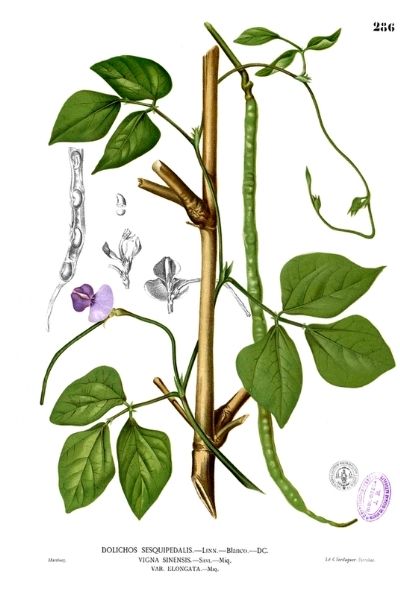
Botanical illustration
But let’s focus on this remarkable yardlong bean, commonly called asparagus pea or snake bean. These vernacular names maintain confusion around this yardlong bean which isn’t actually a true bean (Phaseolus). Little known in our regions, the yardlong bean is widely consumed in Southeast Asia. Yet, it predates the American bean. Likely domesticated in Abyssinia 5000 to 6000 years ago, this yardlong bean spread to India and China before reaching Europe in the Middle Ages. Until the day when beans from the Americas arrived by ship and dethroned it. As for the “beans” of the Vigna species, they crossed the seas with enslaved people, quickly adapting first in the Caribbean, then in South America.
Today, the yardlong bean is one of the main vegetables cultivated in Southeast Asia, particularly in Taiwan, Bangladesh and the Philippines where it’s known as “poor man’s meat”. Simply because it’s a vegetable plant from the Fabaceae family (formerly legumes), rich in plant proteins.
Botanically speaking, Vigna is a herbaceous plant, cultivated as a vegetable, with a climbing habit. This plant is sinistrorse, meaning its inermous voluble stems twine from right to left, counter-clockwise. These stems can reach up to 4 metres long, twisting around their supports.
The triangular leaves, arranged along the stems, are trifoliolate with pointed tips and can measure up to 12 cm.
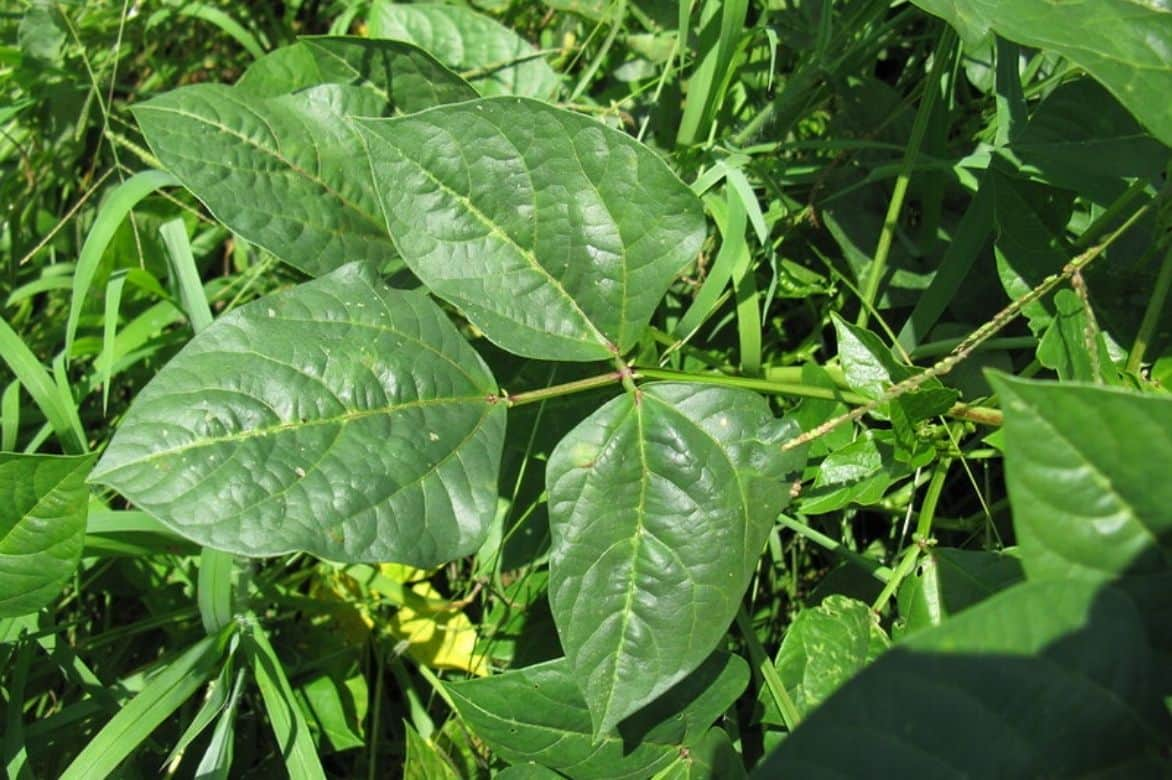
Trifoliolate leaf of the yardlong bean
From July to September, the foliage is adorned with papilionaceous flowers, grouped in pairs or solitary, blooming at the stem tips on long peduncles. These flowers display a beautiful yellow colour with purple hues.
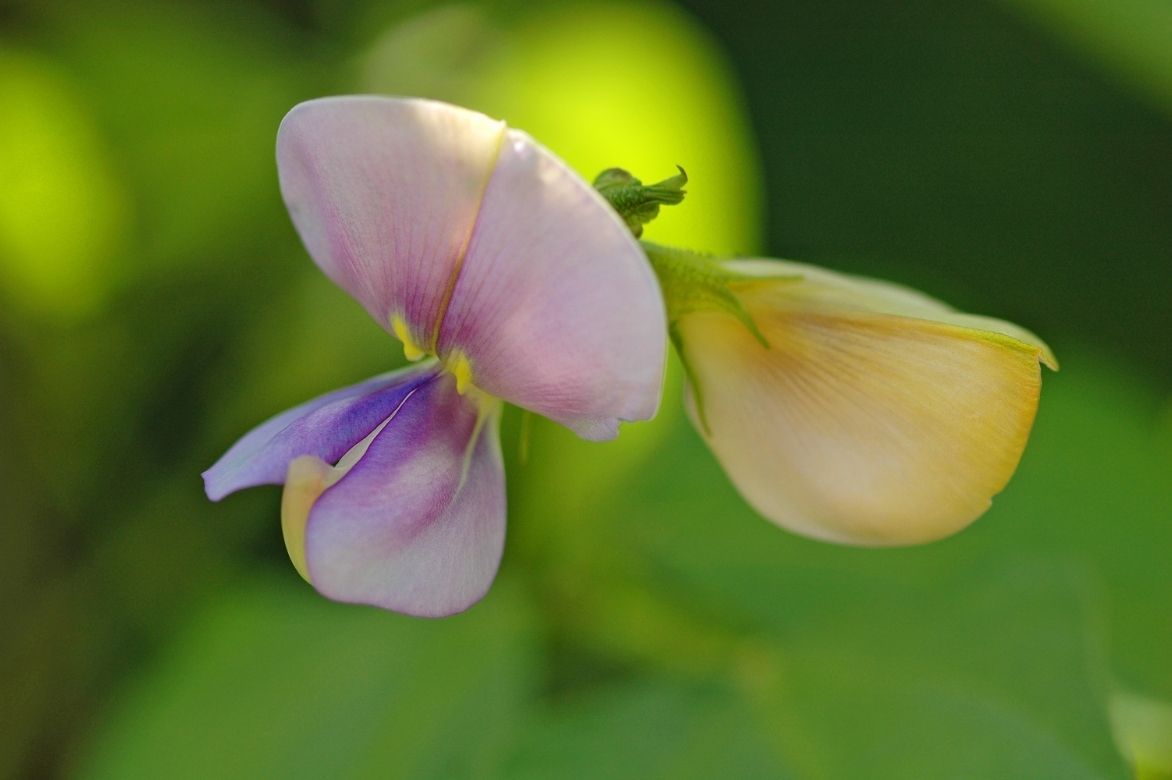
The flowers give way to long, slender pods. Here again, the yardlong bean lives up to its name thanks to the size of its edible pods which can measure up to one metre depending on the variety. Cylindrical and stringless, green or red, these pods grow in clusters. They contain kidney-shaped seeds, usually white, with little culinary value unlike those of its cousins, the cowpea and mung bean.
Native to and widely cultivated in tropical and subtropical regions, the yardlong bean is particularly tender but very drought-resistant. Its seeds require a minimum of 20°C to germinate.
Like all Fabaceae plants, Vigna unguiculata subsp. sesquipedalis is a soil-improving plant. The yardlong bean has roots covered with nodosities that host the aerobic soil bacteria Rhizobium with which it maintains a true symbiosis. These bacteria can fix atmospheric nitrogen and make it available to the plant. The soil is thus naturally enriched with nitrogen, a very useful characteristic for crop rotation or companion planting.
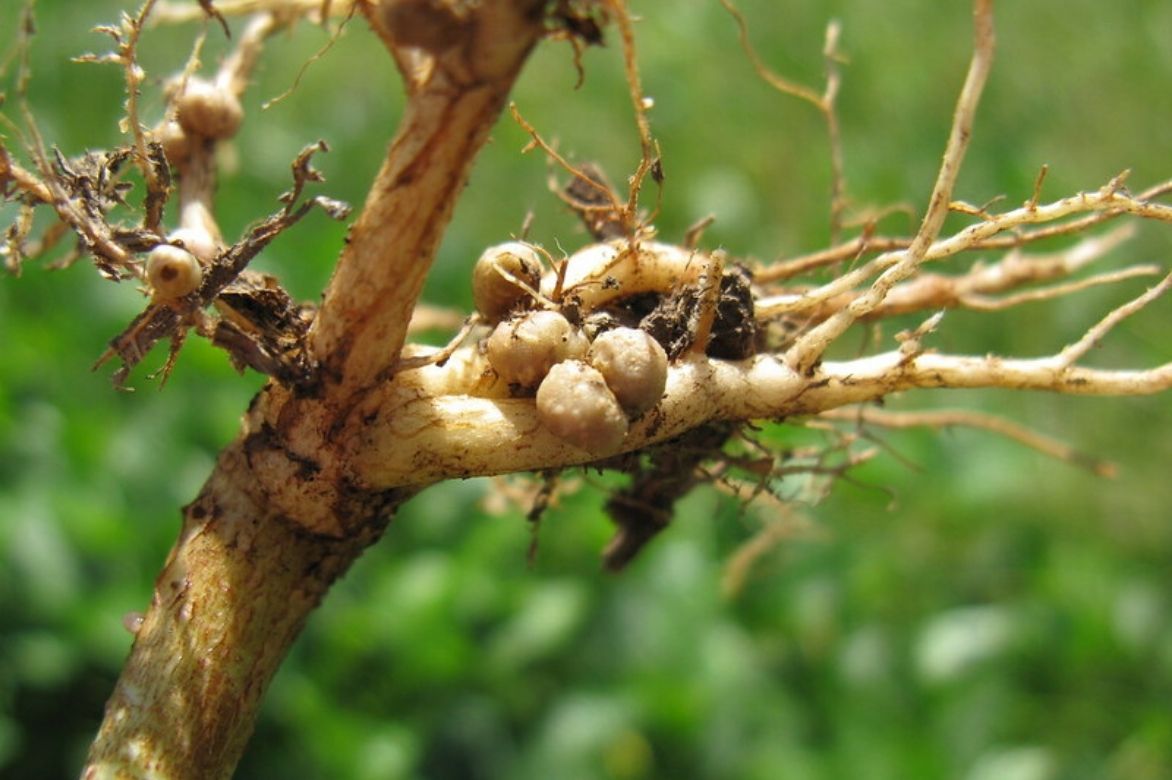
The presence of nodosities on its roots makes the yardlong bean a soil-improving plant
The different varieties of yardlong beans
Vigna unguiculata subsp. sesquipedalis includes several varieties, derived from the typical species with long pendulous pods. The variety ‘Tapir’, highly productive, has dark green, almost shiny pods. Some varieties produce purple-coloured pods up to 50 cm long, such as ‘Red Noodle’. The variety ‘Mosaic’, with high yield, offers variegated pink and white pods that are very crunchy with a sweet flavour.
Our Favourite Varieties
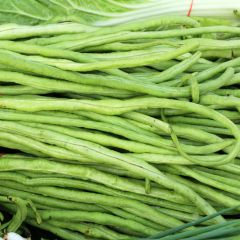
Vigna unguiculata subsp. sesquipedalis
- Flowering time June to August
- Height at maturity 4 m
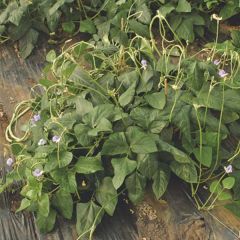
Dwarf Kilometre Bean (Kouseband) - Metro nano
- Flowering time June to September
- Height at maturity 40 cm
Discover other Yardlong Beans
View all →Available in 1 sizes
Available in 1 sizes
Available in 1 sizes
Available in 1 sizes
Available in 1 sizes
Planting the Yardlong Bean
Where to plant?
When it comes to soil, the yardlong bean is not particularly fussy. Ordinary, well-worked and well-drained soil will suffice. However, it does not appreciate chalky soils. You can add compost, but this should be done in the autumn prior to sowing. Work the soil well before sowing, as yardlong beans dislike compacted ground.
Its requirements are more related to temperature and therefore its exposure. As a tropical and subtropical plant, the yardlong bean needs warmth – and for a long summer period. The seeds should therefore be planted in full sun and sheltered from wind.
In southern France, yardlong beans can be sown directly in the ground. Elsewhere, direct sowing is less reliable, so it’s better to grow them under cover or in a polytunnel.
To sow the seeds, the soil must have reached a temperature of at least 20°C.
Like all Fabaceae, yardlong beans do not appreciate being planted near Alliums. Avoid planting them next to garlic, onions or shallots.
When to plant?
For direct sowing in the ground, it’s best to wait until May. Once the Ice Saints period has passed, the risk of late frosts is eliminated. Sowing can continue until mid-June.
Under cover, sowing takes place in April. The young plants will be transplanted in mid-May.
How to plant?
For direct sowing, plant in clusters of 2 to 3 seeds, spaced at least 50 cm apart. The seeds should be buried 6 cm deep. Rows should be spaced 70 cm apart.
If sowing in rows, place one seed every 30 cm, at a depth of 3 cm.
Under cover, yardlong beans can be sown in buckets or seed trays. Plant one seed per alveolate, buried 3 cm deep. Four weeks after sowing, the seedlings can be transplanted into the ground in full sun or under a polytunnel if a long warm period is not guaranteed.
The care of yardlong beans
Once sown, the yardlong bean requires little care. Highly resistant to drought, it does not need watering. However, like green beans, earthing up can be done when the young plants have reached 25 to 30 cm. Hoeing and weeding will never be unnecessary.
Due to the vigour of their voluble stems, which, let us remember, can reach 3 to 4 metres, good staking is essential for yardlong beans. You can use sturdy metal trellising, strong strings stretched between stakes, or set up poles in a tepee or A-frame arrangement. Your children won’t be long in making use of it!
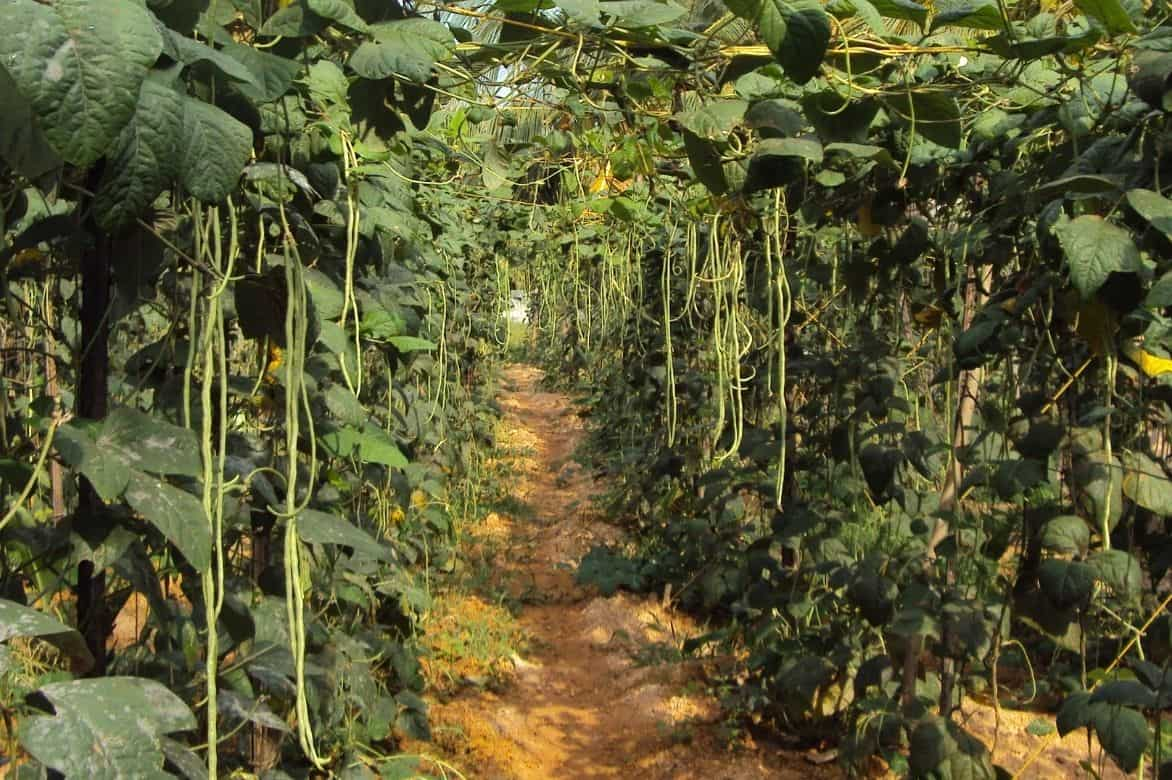
With favourable growing conditions, yardlong bean young plants can reach 3 to 4 metres in height, and the pods up to 1 metre long.
In Africa, where the yardlong bean is cultivated, gardeners train them up maize plants.
The yardlong bean is rarely affected by diseases and parasitic pests. If grown in a greenhouse or under a tunnel, the risk of red spider mite infestation (which are actually mites) is always possible due to the confined atmosphere. Often, simply spraying the foliage with fresh water and ventilating the space is enough.
The harvest and storage of yardlong beans
Around two to three months after sowing, the pods of yardlong beans are ready to be harvested. The harvest therefore spans from July to September-October if weather conditions are favourable.
Depending on the variety of yardlong bean, the pods should be picked when they measure 30 to 40 cm. Beyond this, they lose tenderness and flavour. As with fillet beans, harvesting should be done every 2 to 3 days.
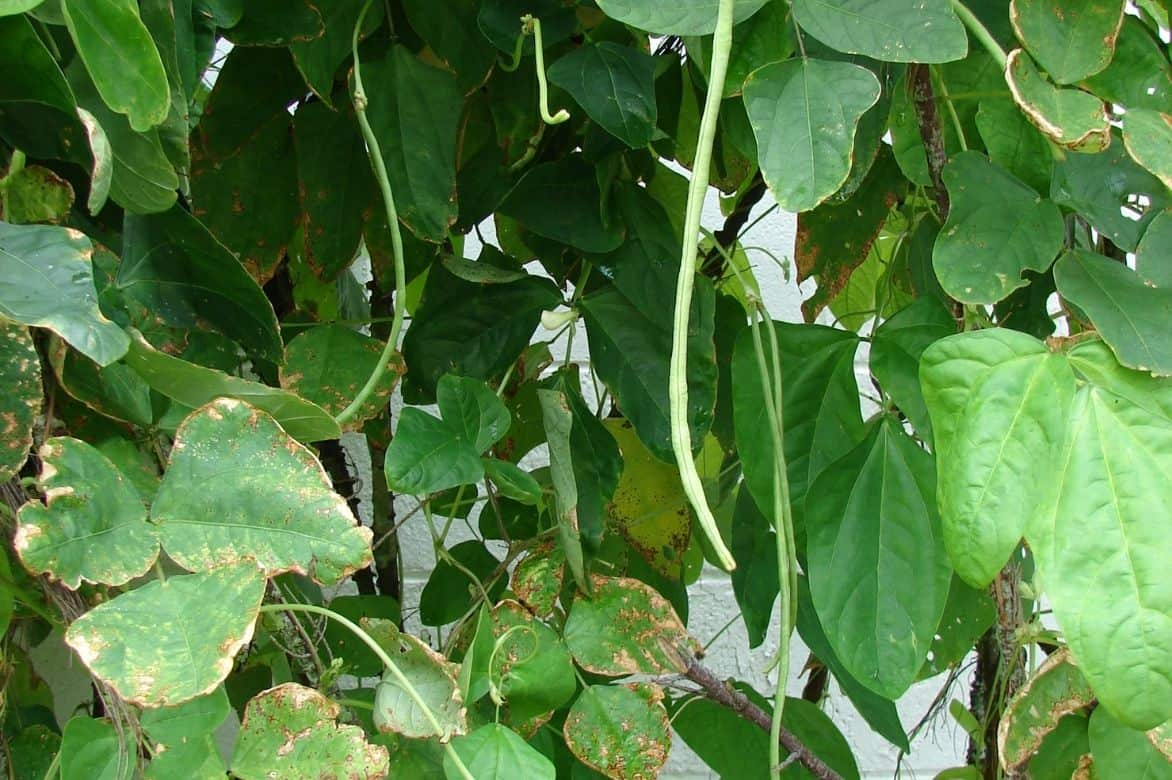
Ideally, yardlong bean pods should be harvested every 2 to 3 days when they reach 30 to 40 cm.
Yardlong beans have a short shelf life. They can be kept for 2 to 3 days in the vegetable drawer of the refrigerator, wrapped in a damp cloth. Beyond this, the pods become soft.
How to cook these funny-looking beans?
These surprising beans boast a flavour that lies somewhere between green beans and asparagus. They can be cooked in boiling water or steamed, or stir-fried in a wok or pan for about ten minutes with garlic, chives and spices. Just remember to cut them into small sections before cooking. Afterwards, they can companion meat or fish in sauce.
If your yardlong beans were picked slightly mature, you can fry them. Yardlong beans can also be eaten raw in salads.
To go further
- Fascinated by unusual vegetables? Discover 10 other quirky vegetables to grow in your kitchen garden
- If you need inspiration for staking your yardlong beans, check out Ingrid’s two articles: staking pole varieties and the bean pole tepee
- The yardlong bean has its place in a Mediterranean garden. I also explain which other vegetables to grow in a kitchen garden located in Southern France
- Subscribe!
- Contents



































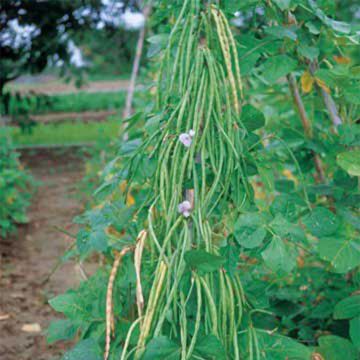

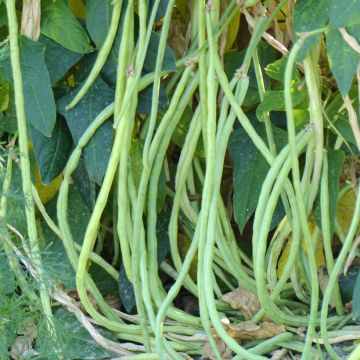
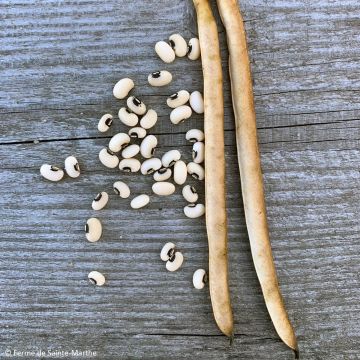
Comments